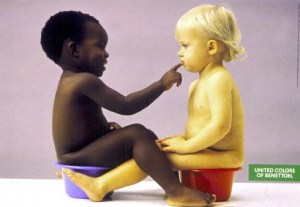Black Students’ Learning Gaps Start Early, Report Says

0 comments,
20/03/2013,
by IAmNotARapperiSpit.com,
in African-American Awareness,
JumpStart,
my people,
News
African American pupils are far less likely to take college prep classes and more likely to miss school because of suspensions, a group finds, calling for strong intervention.
“What we have in this state for African American students is a school-to-prison pipeline, where they are more likely to go to prison than college,” said Arun Ramanathan, the group’s executive director. “We need to forcibly intervene as a California community to prevent this from continuing.”
But how to make lasting progress against problems that have been debated for decades drew no easy answers at a community meeting Monday at the California Community Foundation, which funded the study.
Franklin Gilliam Jr., a UCLA professor of public policy and political science, said that early childhood support was “the single most important thing you can do” to give black children a solid start.
The report, for instance, cited research findings by the Rand Corp. and Children Now that found African American toddlers were less likely than their white peers to have books at home or be read to everyday. The report also cited 2004 Rand findings that only 13% of black children attended preschools with teachers who have degrees in early childhood education, compared to about 41% for whites and Asians.
Nearly 150,000 children under age 6 are on county waiting lists for child care, according to Children Now, a nonprofit advocacy group. And $1.2 billion in cuts to state funding for those services since 2008-09 budget year has reduced the number of child care spots by 110,000, according to Sydney Kamlager, district deputy director for AssemblywomanHolly J. Mitchell (D-Culver City).
Marqueece Harris-Dawson, president of the nonprofit Community Coalition, was a bit more upbeat, saying that although only 20% of African American students in L.A. County take college prep courses, that percentage has nearly tripled in the last decade.
He said the federal government’s move to provide student-achievement data by race in 2001 was a key factor in raising public awareness about the needs of African American students. Last year, a state Assembly committee held hearings on minority males and the academic, economic and health challenges they face.
“As a rule, things get better when people are willing to fight over it,” he said.
He added that his organization would continue to push for lower class sizes, courses linked to careers, better college preparation and more effective discipline policies.
Thomas Saenz, president of the Mexican American Legal Defense and Educational Fund, added that racial profiling in tracking students into low-level classes and other examples of “unconscious bias” bedevil both Latinos and African Americans, underscoring the need for the communities to work together. He also urged protests against moves to eliminate race-based data collection.
The report found that African American students are doing well in some school districts, particularly those with higher concentrations of other races. In the diverse Culver City Unified School District, more than two-thirds of African Americans are at grade level in reading and math, and 88% graduate. Officials there credited more counseling support, a culture of high expectations and targeted actions to support African American students, such as focus groups and teacher training on diversity.
The best performance was in such Westside districts as Wiseburn Elementary and Palos Verdes Peninsula Unified. In Palos Verdes, where African Americans make up 3% of the 11,840 students, 100% graduate, 60% complete the college-prep course work and three-fourths are at grade level in reading and math.
Those bright spots, however, are exceptions in an overall troubling picture. School districts in the north, such as Antelope Valley Union High, and the south, such as Lynwood Unified, showed particularly low levels of achievement.
In Los Angeles Unified, about four in 10 African American students perform at grade level in reading and math, two-thirds graduate and one-third complete college-prep courses.
“Whatever adjective is worse than bad, this is it,” Gilliam said about the plight of black students. “We’re concluding, either explicitly or implicitly, that these are throwaway kids.”
Tags:
Academic AchievementAfrican American StudentsBlack StudentsCalifornia Community FoundationCalifornia UniversitiesCalifornia UniversityCurrent TrendsEasy AnswersEducation TrustGilliamKindergartnersNonprofit Advocacy GroupPreparatory ClassesPsychological ConditionsPublic School DistrictsPublic School StudentsRand CorpRigorous CollegeSchool Dropout RateSingle Most Important ThingUcla Professor 



